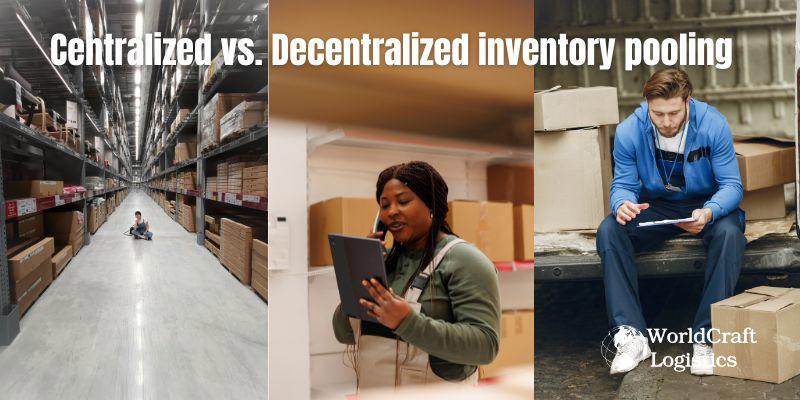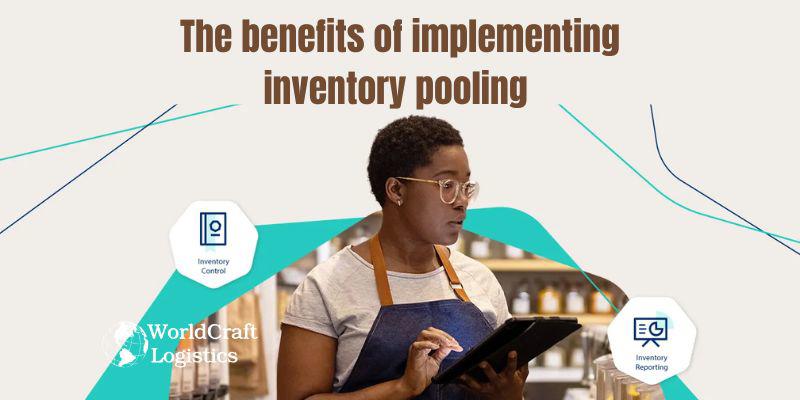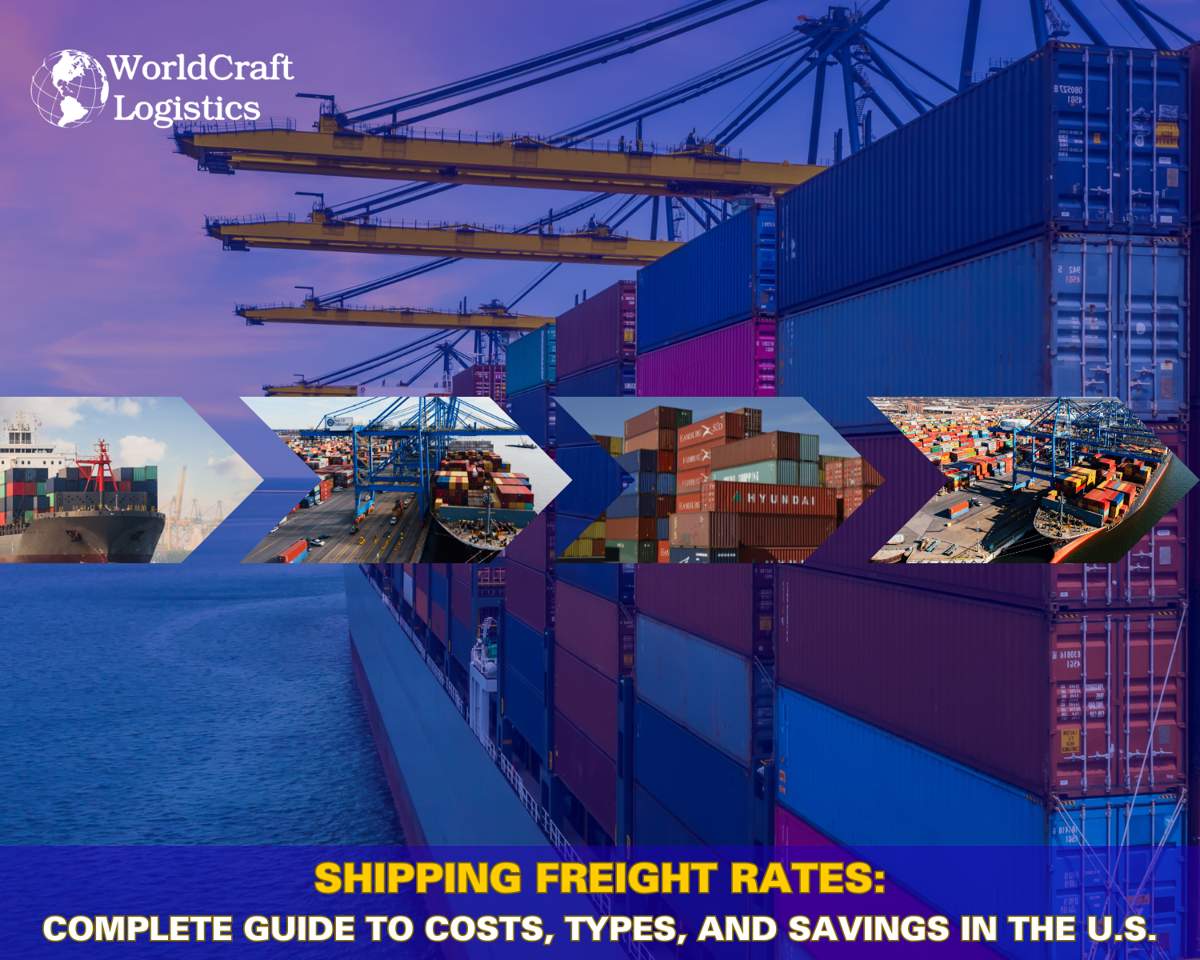
Starting June 1st, 2023 Our warehouse fee will be $0.65/cubic foot per month
In effort to lower the warehouse storage fee during inflation, we have went narrow aisle racking.This construction took us four months but the project is finally completed. With narrow aisle racking, we are able to drop storage by 24%.We as partners will go through this inflation together.
07/25/2024
Your ecommerce business is poised for expansion into new channels and regions. The strategy involves establishing a warehouse in each new state you enter to serve local customers. Likewise, a dedicated warehouse will be opened for each new sales channel to store its specific inventory. However, you quickly find yourself overwhelmed. Operating numerous facilities proves costly, surplus inventory accumulates, and managing varied inventories consumes all your time.

This predicament underscores why many ecommerce brands opt for inventory pooling. Inventory pooling simplifies and streamlines inventory management, making it more cost-effective and easier to run a successful business. In this article, we will explore the concept of inventory pooling, its benefits and challenges, and how an omni fulfillment partner like WorldCraft Logistics can help you implement it.
Inventory pooling is an inventory management strategy where a brand maintains a centralized stock supply that serves multiple locations and sales channels. Essentially, orders for various locations and those placed across different channels are fulfilled from a shared stock supply.
This strategy enables businesses to ensure better stock availability with less inventory on hand, preventing stockouts and simultaneously reducing warehousing costs. Here are some key aspects of inventory pooling:
👉 Resource Sharing: Different companies or units within a company combine their inventories, treating them as a single pool rather than managing them separately. This can include raw materials, finished goods, or spare parts.
👉 Cost Reduction: By pooling inventory, companies can reduce the total amount of stock they need to hold. This leads to lower holding costs, reduced warehousing expenses, and decreased capital tied up in inventory.
👉 Risk Mitigation: Pooling helps mitigate risks related to demand fluctuations and supply chain disruptions. If one participant in the pool experiences a surge in demand or a supply delay, the pooled inventory can be used to meet this need, ensuring continuity of operations.
👉 Improved Service Levels: With a larger, shared inventory pool, companies can respond more quickly and effectively to customer demands, leading to higher service levels and better customer satisfaction.
👉 Collaboration and Synergy: Inventory pooling requires close collaboration and communication between participating entities. This collaboration can lead to additional synergies and efficiencies beyond inventory management.
👉 Data and Technology Integration: Effective inventory pooling often relies on advanced data analytics and technology platforms that provide real-time visibility into inventory levels and facilitate efficient management and distribution.
Overall, inventory pooling is a collaborative strategy that helps companies manage their inventories more effectively, reduce costs, and enhance their ability to meet customer demands.

Other articles from Worldcraft Logistics share more about inventory, helping you gain more new knowledge:
👉 Phantom Inventory: Causes, Solutions, and Best Practices
👉 Surplus Inventory: Strategies to Minimize Excess Stock
👉 Finished Goods Inventory: How to Manage & Compute using formulas
In inventory pooling, various distribution points, such as delivery locations and sales channels, share a common supply of inventory. Instead of maintaining separate warehouse spaces for each distribution point, orders are fulfilled from one large pool of inventory.
For an ecommerce brand with multiple manufacturers or suppliers, all vendors send their inventory to this centralized pool. The ecommerce brand then allocates the inventory across different sales channels, stores, and locations based on demand. This method streamlines the flow of inventory and reduces the complexities involved in supply chain management.
For instance, an online shoe brand receives orders from customers in New York, Los Angeles, and Chicago. Instead of running three separate facilities, one in each state, the brand centralizes its inventory in a single warehouse in Chicago to fulfill all its orders.
This online shoe brand also sells through multiple channels, including its e-commerce store, online marketplaces, and social media platforms. By pooling its inventory, the brand fulfills all orders from the Chicago warehouse, regardless of the sales channel.

Implementing inventory pooling in an e-commerce business can be done in a couple of ways. The two most common inventory pooling models are centralized and decentralized pooling.
Many businesses centralize their inventory, storing it all in one location despite having a multi-channel distribution strategy.
From a single fulfillment center, they dispatch inventory to various destinations as needed. Orders from ecommerce websites and marketplaces are also fulfilled directly to consumers from this single warehouse.
Alternatively, some businesses might distribute their inventory across several warehouses or fulfillment centers. Each facility acts as a mini inventory pool and typically serves customers across various cities, states, and channels.
However, this pooling strategy is effective only if the brand employs a centralized inventory management system or software to track, record, and manage their entire inventory across all locations. This guarantees that, even with multiple fulfillment centers, you maintain a comprehensive view of your total inventory.

Inventory pooling offers numerous benefits, particularly in terms of efficiency, cost, and customer satisfaction.
Inventory pooling offers substantial efficiency gains. By consolidating warehouses across distribution points, operations become streamlined, saving time and reducing complexities. Centralizing inventory eliminates the need for costly storage and warehouse space at each distribution point, a significant cost-saving advantage.
Decentralized inventory pooling necessitates multiple fulfillment centers, increasing operational expenses. Despite higher storage and transportation costs, potential savings on shipping expenses can offset these additional expenditures, especially with high order volumes, average order values (AOV), and margins.

Inventory pooling aids brands in maintaining optimal inventory availability to meet consumer demand. By consolidating inventory from multiple locations or channels into a single supply pool, brands mitigate the risk of stockouts, ensuring continuous order fulfillment even amid varying demand spikes.
Moreover, this strategy effectively prepares brands to swiftly adapt to demand fluctuations, enabling prompt order fulfillment and bolstering overall customer satisfaction.
While inventory pooling offers substantial benefits, it also poses several challenges that require careful consideration prior to implementation in your operations.
Given that your inventory spans across various locations and distribution points, a substantial stockpile is essential to meet demand from all channels. Consequently, consolidating inventory necessitates a significant upfront investment, coupled with expenses for maintaining extensive warehouse facilities to accommodate this inventory.
Certainly! Here's the paragraph split into two shorter paragraphs:
An important factor to consider is the increased complexity associated with managing inventory across multiple channels. It's crucial to maintain real-time balance and updates of inventory levels to match orders from all sales channels, preventing overselling and minimizing backorders.
Implementing a robust omnichannel order management solution can greatly simplify this process, ensuring smooth flow of orders throughout your supply chain.

Accurate demand forecasting is crucial to maintaining sufficient inventory levels across various locations and channels from a unified inventory source. To achieve precision in forecasts, it is essential to meticulously track sales history, market trends, and demand patterns across all distribution channels. This allows for informed decisions on the optimal inventory levels required.
Here are responses to the frequently asked questions regarding inventory pooling.
Inventory risk pooling involves consolidating inventory resources to mitigate risks stemming from uncertainties and fluctuations in demand.
Inventory pooling isn't universally applicable. Perishable products, for instance, pose a higher risk of spoilage, making inventory pooling unwise in such cases.
Inventory pooling has the potential to shorten fulfillment times by ensuring sufficient inventory is maintained, enabling businesses to expedite order processing and meet customer demands promptly.
In an ever-evolving business landscape, optimizing inventory management is a critical challenge. Inventory pooling not only offers cost and efficiency benefits but also helps companies enhance customer service and boost competitiveness. By collaborating and sharing resources, businesses can mitigate the risks associated with demand fluctuations and improve operational performance. The future of inventory management will undoubtedly rely heavily on innovative and collaborative strategies like inventory pooling. It is time for companies to reassess their approaches and fully leverage the advantages of this model to prepare for a sustainable and successful future.
SEO
Digital Marketing/SEO Specialist
Simon Mang is an SEO and Digital Marketing expert at Wordcraft Logistics. With many years of experience in the field of digital marketing, he has shaped and built strategies to effectively promote Wordcraft Logistics' online presence. With a deep understanding of the logistics industry, I have shared more than 500 specialized articles on many different topics.

Education
01/05/2025

Education
02/18/2025

Education
01/01/2024

Education
08/28/2024

Education
09/09/2025